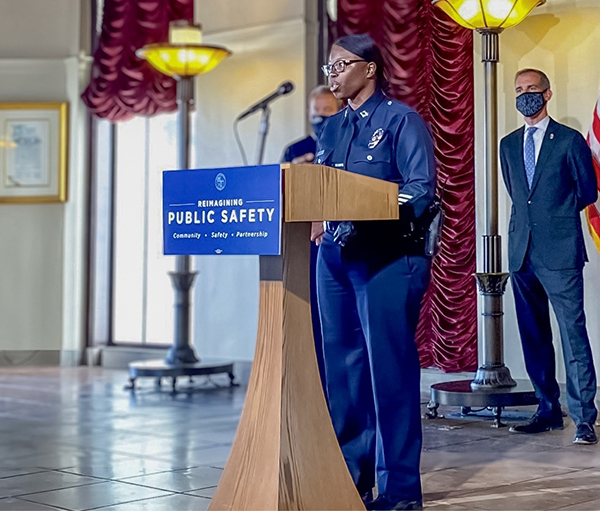COMMUNITY REPORT
By Mayor Eric Garcetti
Contributing Columnist
The past six months have been exhausting and harrowing for all of us. An unprecedented public health crisis. Widespread economic devastation. A stirring reckoning with racial injustice.
In Los Angeles, in this moment, we acknowledge and embrace a clear truth: many of these challenges existed long before COVID-19 entered our lexicon. And many of the solutions have already been tested and tried right here.
That is certainly the case in public safety. Prior to COVID-19, crime was a public health emergency. In the early 1990s, L.A. saw more than 1,000 homicides a year, usually concentrated in areas bypassed for decades, starved of resources and filled with gun violence.
Our old models weren’t working, so we had to come up with something different. A step to build bonds of trust between police officers and the people they are sworn to serve.
And while many cities nationwide are trying to figure this out today, Los Angeles already boasts a strong foundation.
It’s called the Community Safety Partnership (CSP), where we deploy LAPD officers to a single place for a five-year assignment so they can develop relationships with the neighbors, get to know the names of local youth, become critical threads in the fabric of areas too long neglected.
And now, we are weaving that model into the entire department with a new CSP Bureau — led by Deputy Chief Emada Tingirides, who played a key role in creating this initiative in 2011, alongside a civilian commander — injecting equity, justice, and fairness into the way we protect Angelenos. Because we want everyone to feel secure — not only in the parks and streets of their neighborhoods, but in the presence of those in uniform.
CSP is a proven success story. Since its expansion to six additional sites during my time in office, it has delivered less crime, fewer arrests and more security to the public housing developments and communities where it exists. In fact, a recent UCLA study found that more than 220 violent crimes were prevented in two CSP zones over a five-year period. That’s 220 murders, aggravated assaults, and other violent crimes that didn’t happen and that didn’t devastate lives and families.
But more than any statistic, CSP has built relationships that changed and saved lives, because police officers became mentors and friends — not outside enforcers of order, but co-creators of public safety.
That should be the standard, but it can’t be the only step forward. Indeed, the advent of the CSP Bureau isn’t happening in a vacuum. Our city officials and LAPD are working closely with civil rights, community and academic leaders to put into practice the core principles of 21st century law enforcement, rooted in greater accountability, transparency and relationship-based policing.
So alongside our civilian-led Police Commission and our City Council, we ensure every officer is trained on de-escalation and implicit bias. We put body cameras on patrol officers and release those videos to the public.
We’ve banned the carotid hold, reformed our use-of-force policy, and halted use of the CalGangs database. We’ve expanded the area covered by our gang reduction and youth development programs by 50%, a step that’s reduced juvenile arrests, decreased gang-related crime and placed the burden for youth outreach, prevention and intervention not on the shoulders of law enforcement, but in the hands of community-based providers.
The CSP Bureau is what’s next. A product of trust and cooperation. A result of community, partnership, and personal relationships. A move to meet our vision of a city where belonging and equity aren’t mere aspirations set, but goals met.
If we do this right, if Angelenos, especially in Black and Latino neighborhoods, trust the police officers assigned to serve them, they feel, and they are, safer. And that, after all, is the point of a smart strategy for public safety.
Mayor Eric Garcetti’s “Community Report” column runs monthly in The Wave.













